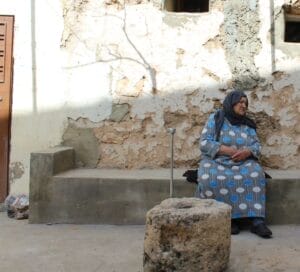
July 30th 2021 marks World Day against Trafficking in Persons. Still today, many of the victims of trafficking end up in the circle of “Modern Slavery”, a practice that has changed over time, but which is still widespread globally. Slavery still exists in many heterogeneous forms that the ILO (International Labor Organization) defines as "situations of exploitation that a person cannot refuse or leave because of threats, violence, coercion, deception, and/or abuse of power”. Forms of modern slavery include sexual exploitation, domestic servitude and forced labor in construction or agriculture. In this regard, the head of WeWorld's international programs department, Stefania Piccinelli explains:
“Women and girls are mostly affected by forms of modern slavery, accounting for 77% of victims globally. One of the major manifestations of their exploitation is domestic servitude, of which most of the victims are girls under the age of 16. In most cases, it is the direct consequence of forced marriage, which involves nearly 16 million people worldwide. Child brides are forced by their partners to live in conditions of semi-slavery and to take care of housework, children they often have prematurely and dependent elderly parents. Education is a fundamental factor that protects people from these forms of exploitation. Investing in education for girls is the strongest tool we have to tackle modern slavery.”
The pandemic and the recession increase the phenomenon of modern slavery
The economic recession caused by the pandemic and the health crisis have certainly had a negative impact on family poverty, outlining a risk factor for children and adolescents.
The forced closure of schools and the consequent social isolation due to the spread of Covid-19 - especially in the first phase - have greatly increased the risk for under 18s of becoming victims of trafficking and sexual or labor exploitation. Going to school is indeed a fundamental protective factor, which can hinder these forms of exploitation.
According to the latest data available from the UNODC (United Nation Office in Drugs and Crime) Global Report on Trafficking in Persons 2020, for every 10 victims of trafficking - identified globally - 5 are women and 2 are girls. Overall, 50% of identified victims are trafficked for sexual exploitation, 38% are subjected to forced labor (about 25 million people), while 6% have been forced to engage in criminal activities and more than 1% in forced begging.
A smaller percentage - but still considerable if compared to the total number of registered victims – involves people trafficked for forced marriage (about 16 million), organ harvesting and other purposes. It is estimated that 1 in 5 women in the world were forced to marry as a child.
There is no precise data on domestic servitude, given the hidden nature of the phenomenon. However, we can certainly say that it mainly involves women and girls under the age of 16.
The phenomenon of modern slavery is still widespread today and it has always been difficult to give a precise estimate on the number of people involved, since it is often difficult to identify them. Poverty, economic and social issues and psychological vulnerability are underlying conditions that make people more vulnerable to exploitation. These factprs have been excaerbated by the economic recession due to COVID-19.
To counter this phenomenon, we work to support the victims in many of the countries where we intervene, such as Cambodia and Tanzania.
We have been operating in Cambodia since 2013. Here, along with our #EUAidVolunteers, we have protected 1 million people against modern slavery and we have created 100 self-help groups that support communities.
Through direct testimonies of former victims, we equip people with the necessary tools to protect themselves from exploitation. We also encourage safe migration channels and practices and we support Cambodian and Thai authorities with training and networking activities to foster more adequate prevention and protection policies and regulations for victims.
If you want to know more about work, read this article on our activites in Tanzania



